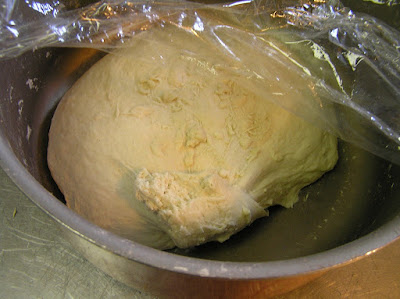
Get everything ready! Ensure your red bean paste hasn't dried out, by either covering it with glad wrap or reheating it and adding in water to make it more paste-like.
Roll out a lump of dough, making sure that the edges are more thinly rolled out than its center.


I was really surprised with the result, because the dough tasted perfect! Note that baking powder has an off-putting alkaline taste, which is disguised by the butter and sugar in the dough. So the recipe given has a very good balance of the ingredients, with a nice amount of fluffiness and no strong bitter aftertaste.
Red Bean Buns
Before and after resting for 30 minutes. Resting is, according to most standard sources, a way to let the gluten in the dough relax, and to allow a more even mixing of water throughout the dough. When rolling dough out, if it starts shrinking back, the best bet is to let it rest! It just seems that all the tips about making better bread require you to have more patience, and to lengthen the amount of time taken to make it.
Subscribe to:
Post Comments (Atom)






0 comments:
Post a Comment